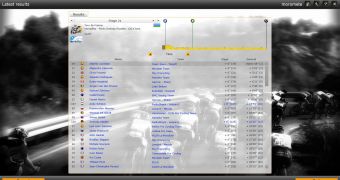The 100th edition of Le Tour de France ended, both in real life and in virtual form, yesterday and I am already missing it and counting the days until next year’s edition.
But until then, it makes sense to look back a little bit at this year’s race, in both its versions, and see what can be learned from the parallels between the actual competition and the simulation created via Pro Cycling Manager 2013.
In my game, Alberto Contador has managed to take the Yellow Jersey, by a very healthy margin from Valverde, another Spaniard.
He has also picked up the Polka Dot Jersey for his mountain attacks, while Cavendish won Green for sprinting.
Garmin was the best team in Le Tour, while the White Jersey for best young rider went to Quintana.
During a lavish final ceremony for the real world 100th Tour, Chris Froome managed to win the competition by a healthy margin, while Quintana took second place and Joaquin Rodriguez placed third.
Quintana has also won the Polka Dot and the young rider competition, while Saxo Bank took the team classification and Sagan wore green on the Champs Elysees.
The differences are a sign of how sports simulations, even the best of them, will never be able to account for all the small differences in performance and preparation that can change results in the real world.
The final results might not be realistic in Pro Cycling Manager 2013, but the game is solid enough to make almost everything that happens seem like it could have happened in the actual competition.
And this is part of the fun with this genre because no one wants to see a perfect replica of what has actually happened.
After all, we play PCM 2013 or Football Manager in order to take a situation and impose out own reality on it rather than in order to relive actual events.

 14 DAY TRIAL //
14 DAY TRIAL //